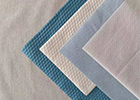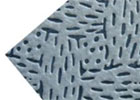Hospital-Grade Nonwoven Fabric Supplier: Advancing Hygiene Standards
|
Applications of Hospital-Grade Nonwoven Fabric Specifications and Features of Hospital-Grade Nonwoven Fabric Customization Options for Hospital-Grade Nonwoven Fabric |
Introduction
Overview of hospital-grade nonwoven fabric
Hospital-grade nonwoven fabric is a type of material widely used in healthcare settings, particularly in hospitals, clinics, and other medical facilities. It is also known as medical-grade nonwoven fabric or surgical nonwoven fabric. Unlike traditional woven fabrics, nonwoven fabric is made by bonding or fusing together fibers to form a sheet or web. This fabric is composed of synthetic fibers, such as polypropylene or polyester, which are known for their durability, strength, and resistance to liquids.
The manufacturing process of hospital-grade nonwoven fabric involves various steps, including fiber selection, web formation, web bonding, and finishing. These steps ensure that the fabric meets the required quality standards for use in healthcare settings. Hospital-grade nonwoven fabric can be produced in different weights, thicknesses, and colors to suit various medical applications.
Importance of hygiene standards in hospitals
Maintaining high hygiene standards is crucial in hospitals to prevent the spread of infections and to ensure the safety of patients, healthcare workers, and visitors. Hospitals are high-risk environments where patients with various illnesses and diseases receive treatment, making them more susceptible to infections. Therefore, using hospital-grade nonwoven fabric is essential to maintain hygiene standards in healthcare settings due to the following reasons:
• Barrier protection: Hospital-grade nonwoven fabric acts as a barrier against microorganisms, such as bacteria and viruses. It helps to reduce the risk of cross-contamination between patients, healthcare professionals, and medical equipment.
• Liquid resistance: The fabric is designed to repel liquids, such as blood, bodily fluids, and chemicals. This feature helps prevent the transmission of infections through contact with contaminated surfaces or materials.
• Breathability: Hospital-grade nonwoven fabric allows air and moisture vapor to pass through, keeping the wearer comfortable and reducing the risk of skin irritation or rashes.
• Ease of disposal: Nonwoven fabric is designed to be single-use, reducing the risk of contamination from reused materials. It can be easily disposed of after use, reducing the risk of spreading infections.
In conclusion, hospital-grade nonwoven fabric plays a vital role in maintaining hygiene standards in healthcare settings. Its barrier protection, liquid resistance, breathability, and ease of disposal make it an essential material for preventing the spread of infections and ensuring the safety of patients and healthcare professionals. By using hospital-grade nonwoven fabric, hospitals can create a safer and cleaner environment for everyone involved in the healthcare process.

Lightweight and comfortable
Hospital-grade nonwoven fabric is renowned for being lightweight and comfortable, making it an ideal choice for healthcare settings. The fabric allows air and moisture vapor to pass through, keeping the wearer cool and reducing the risk of skin irritation or rashes. This feature is especially important for patients and healthcare professionals who need to wear protective garments for extended periods.
Highly absorbent and moisture-wicking
Another advantage of hospital-grade nonwoven fabric is its high absorbency and moisture-wicking properties. The fabric quickly absorbs liquids, such as sweat or bodily fluids, and pulls them away from the skin, keeping the wearer dry and comfortable. This is particularly beneficial in environments where perspiration is common or when dealing with patients with excessive sweating.
In addition to the above advantages, hospital-grade nonwoven fabric offers the following benefits:
• Barrier protection: The fabric acts as a barrier against microorganisms, such as bacteria and viruses, reducing the risk of cross-contamination between patients, healthcare professionals, and medical equipment.
• Liquid resistance: Hospital-grade nonwoven fabric is designed to repel liquids, including blood, bodily fluids, and chemicals. This helps prevent the transmission of infections through contact with contaminated surfaces or materials.
• Ease of disposal: Nonwoven fabric is designed to be single-use, reducing the risk of contamination from reused materials. It can be easily disposed of after use, minimizing the risk of spreading infections.
Overall, hospital-grade nonwoven fabric offers a range of advantages that contribute to maintaining hygiene standards in healthcare settings. Its lightweight and comfortable nature, along with its absorbency and moisture-wicking properties, make it a preferred choice for healthcare professionals and patients alike. Additionally, its barrier protection, liquid resistance, and ease of disposal make it an essential material for preventing the spread of infections and ensuring the safety of individuals in healthcare environments.
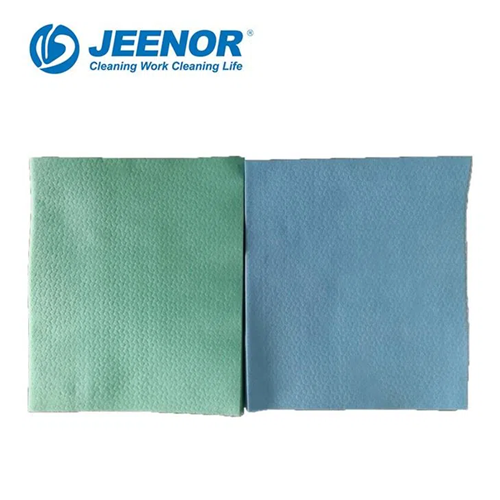
Applications of Hospital-Grade Nonwoven Fabric
Surgical gowns and drapes
Hospital-grade nonwoven fabric finds extensive use in the production of surgical gowns and drapes. These garments provide an essential barrier against microorganisms, preventing the transmission of infections during surgical procedures. The lightweight and comfortable nature of the fabric ensure that healthcare professionals can work efficiently without compromising on their comfort. The high absorbency and moisture-wicking properties of the fabric also come in handy during long surgeries, as they help keep the wearer dry and comfortable.
Disposable bed sheets and pillowcases
Disposable bed sheets and pillowcases made from hospital-grade nonwoven fabric offer significant advantages in healthcare settings. These products provide a hygienic and cost-effective option for maintaining infection control. The nonwoven fabric's ability to repel liquids, such as blood and bodily fluids, ensures that the sheets and pillowcases remain clean and free from contamination. Moreover, the ease of disposal eliminates the need for laundering, reducing the risk of cross-contamination and saving time for healthcare staff.
In addition to these applications, hospital-grade nonwoven fabric is also used in various other healthcare products, including:
• Disposable masks and gloves: The fabric's barrier protection and liquid resistance properties make it suitable for manufacturing disposable masks and gloves. These items help prevent the spread of infections by acting as a barrier against microorganisms and preventing direct contact with potentially contaminated surfaces.
• Wound dressings and bandages: Hospital-grade nonwoven fabric is used in wound dressings and bandages due to its soft texture, which minimizes irritation and discomfort for patients. The fabric's absorbency enables it to effectively manage wound exudate while maintaining a moist wound environment conducive to healing.
• Incontinence products: Nonwoven fabric is widely employed in the production of incontinence products, such as adult diapers and pads. These products rely on the fabric's absorbency and moisture-wicking properties to keep the skin dry and prevent leakage.
• Sterile packaging: Hospital-grade nonwoven fabric is utilized in the sterile packaging of medical devices and surgical instruments. The fabric's barrier properties help maintain the sterility of the enclosed items, safeguarding their integrity and reducing the risk of contamination during transportation and storage.
The versatility of hospital-grade nonwoven fabric makes it an essential material in healthcare settings. Its lightweight, comfortable, absorbent, and moisture-wicking characteristics, coupled with its barrier protection, liquid resistance, and ease of disposal, contribute to maintaining hygiene standards and preventing the spread of infections.
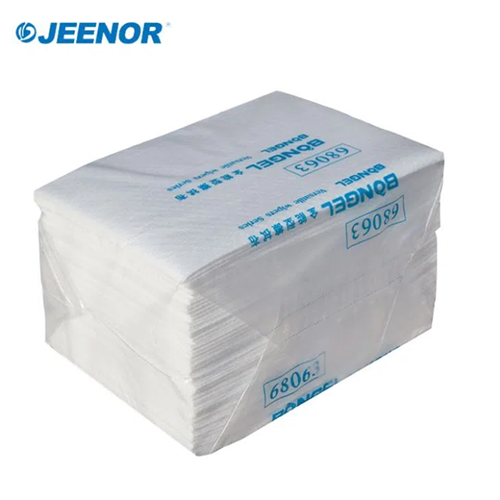
Specifications and Features of Hospital-Grade Nonwoven Fabric
Bacterial and liquid barrier properties
Hospital-grade nonwoven fabric is specifically designed to provide an effective barrier against microorganisms and liquids, making it ideal for use in healthcare settings. The fabric's tight weave and hydrophobic nature repel liquids, such as blood and bodily fluids, preventing them from penetrating through to the other side. This feature ensures the cleanliness and hygiene of the garments and products made from the fabric, minimizing the risk of contamination and transmission of infections.
Antistatic and flame retardant qualities
In addition to its barrier properties, hospital-grade nonwoven fabric often possesses antistatic and flame retardant qualities. Antistatic properties reduce the accumulation of static charges, preventing sparks and electric shocks that could potentially ignite flammable substances. This feature is especially crucial in environments where volatile chemicals and gases are present. Flame retardant qualities, on the other hand, help prevent the fabric from catching fire or spreading flames rapidly, providing an added layer of safety in case of emergencies.
The versatility of hospital-grade nonwoven fabric extends beyond its barrier, antistatic, and flame retardant properties. This type of fabric is also lightweight, comfortable, absorbent, and moisture-wicking, ensuring the well-being and comfort of healthcare professionals and patients. The fabric's absorbency comes in handy during long surgeries or for wound dressings, as it effectively manages moisture while maintaining a moist wound environment conducive to healing.
Another advantage of hospital-grade nonwoven fabric is its ease of disposal. Unlike traditional fabrics that require laundering, nonwoven fabric products can be conveniently discarded after use, eliminating the risk of cross-contamination and saving time for healthcare staff. This feature is particularly advantageous for items like disposable bed sheets and pillowcases, which need frequent changes to maintain hygiene in healthcare settings.
Overall, hospital-grade nonwoven fabric plays a critical role in maintaining hygiene standards and preventing the spread of infections in healthcare settings. Its specifications and features, including its bacterial and liquid barrier properties, antistatic and flame retardant qualities, as well as its comfort, absorbency, moisture-wicking abilities, and ease of disposal, contribute to its effectiveness and suitability for various healthcare applications.
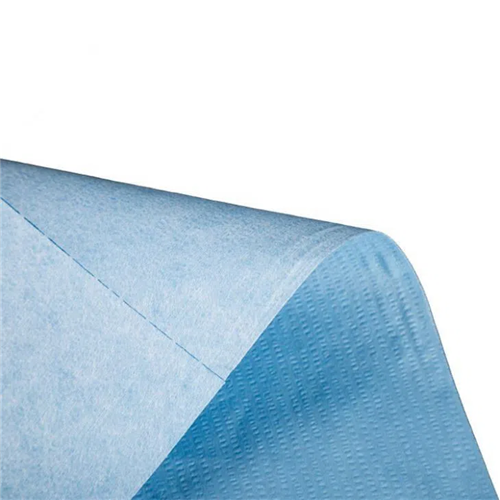
Customization Options for Hospital-Grade Nonwoven Fabric
Color options and prints
Hospital-grade nonwoven fabric offers a range of color options and prints to meet the needs and preferences of healthcare facilities. While white is the most commonly used color, fabrics in other colors such as blue and green are also available. These color choices allow for easy differentiation between different departments or roles within the healthcare facility. Additionally, some fabrics can be printed with patterns or designs, adding a touch of personalization or branding to the garments and products made from the fabric.
Different fabric weights and textures
Another customization option for hospital-grade nonwoven fabric is the choice of different fabric weights and textures. The weight of the fabric refers to its thickness and density, which can vary depending on the specific requirements of the application. Heavier weight fabrics may be used for products that require more durability and strength, while lighter weight fabrics are suitable for applications that require flexibility and breathability. Furthermore, different textures such as smooth or embossed can be chosen based on aesthetic preferences or functional needs.
In summary, customization options for hospital-grade nonwoven fabric include a variety of color choices and prints to suit the branding or differentiation needs of healthcare facilities. Different fabric weights and textures offer flexibility in terms of functionality and visual appeal. These customization options allow healthcare professionals and patients to have garments and products that not only meet their specific performance requirements but also reflect their individual style and preferences.
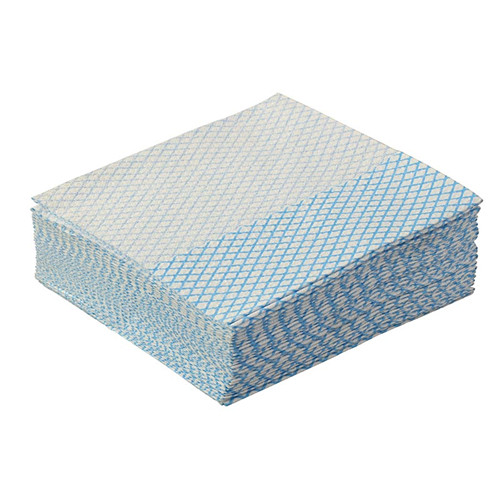
Future Trends in Hospital-Grade Nonwoven Fabric
Advancements in antimicrobial properties
As the healthcare industry continues to evolve, there is an increasing focus on preventing the spread of infections within hospitals and healthcare facilities. This has led to advancements in the antimicrobial properties of hospital-grade nonwoven fabric. Manufacturers are now incorporating technologies that inhibit the growth of bacteria, fungi, and other pathogens, thereby reducing the risk of hospital-acquired infections. These advancements in antimicrobial properties not only enhance the safety and hygiene of healthcare garments and products but also contribute to the overall well-being of patients and healthcare professionals.
Environmentally sustainable alternatives
With the growing awareness of environmental sustainability, there is a demand for hospital-grade nonwoven fabric that is eco-friendly and biodegradable. Manufacturers are now exploring sustainable alternatives by incorporating biodegradable fibers and using environmentally friendly processes in the production of nonwoven fabrics. These sustainable options help reduce the carbon footprint of healthcare facilities and minimize the environmental impact of disposable medical textiles. Furthermore, some fabrics are being developed using recycled materials, providing a circular economy approach to the production and usage of hospital-grade nonwoven fabric.
To summarize, the future trends in hospital-grade nonwoven fabric include advancements in antimicrobial properties to enhance safety and hygiene within healthcare facilities. Additionally, the demand for environmentally sustainable alternatives is driving the development of eco-friendly and biodegradable nonwoven fabrics. These future trends address the evolving needs of the healthcare industry, ensuring that healthcare professionals and patients have access to high-quality and sustainable garments and products.

Summary of key advantages and applications
Advancements in antimicrobial properties of hospital-grade nonwoven fabric enhance safety and hygiene within healthcare facilities.- The use of nonwoven fabric with antimicrobial properties helps reduce the risk of hospital-acquired infections.- Environmentally sustainable alternatives contribute to the overall environmental sustainability of healthcare facilities.- Biodegradable nonwoven fabrics and recycled materials reduce the carbon footprint and environmental impact of hospital-grade textiles.- The development of sustainable nonwoven fabrics aligns with the growing demand for eco-friendly healthcare products.- Antimicrobial nonwoven fabric offers improved protection and hygiene for healthcare professionals and patients.
Importance of partnering with a reliable supplier
When it comes to hospital-grade nonwoven fabric, partnering with a reliable supplier is of utmost importance. A trusted supplier ensures the availability of high-quality and compliant materials that meet the specific requirements of healthcare facilities. Additionally, a reliable supplier offers expertise in the industry, keeping up with the latest advancements in nonwoven fabric technology. They can provide guidance throughout the product selection process, ensuring that healthcare professionals have access to the most suitable materials for their needs. By partnering with a reputable supplier, healthcare facilities can ensure the safety, effectiveness, and sustainability of their nonwoven fabric products.
In conclusion, the future of hospital-grade nonwoven fabric is marked by advancements in antimicrobial properties and the development of environmentally sustainable alternatives. These trends address the evolving needs of the healthcare industry, placing a greater emphasis on safety, hygiene, and environmental responsibility. Partnering with a reliable supplier ensures access to high-quality and compliant materials, reinforcing the overall effectiveness of nonwoven fabric products in healthcare applications.




